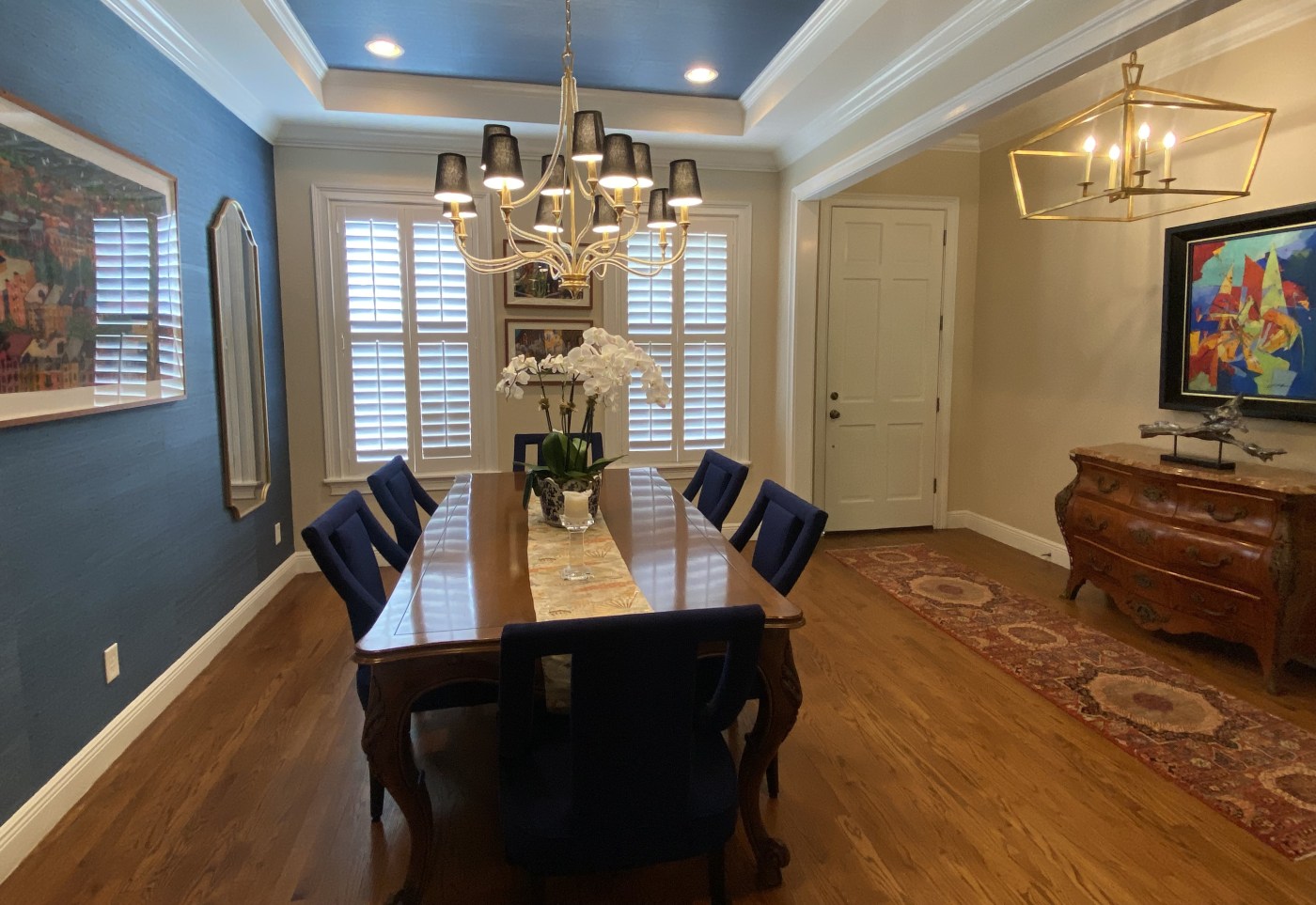We are all a little house-blind. That is, we put off seeing what needs refreshing, replacing, updating or upgrading for as long as we can. It’s self-protective. If we don’t see that the drapes are fraying, the carpet has worn spots and our furnishings are so last century (and not in the cool sense), we can dodge the inconvenience and expense of doing something about it.
However, denial only works for so long. Then you’re left with — ahem — reality. As times change, styles change. You can either keep up or live in your time capsule.
THE ‘BEFORE’ LOOK: Columnist Marni Jameson set about to refresh the dated look, above, of her old dining room and entryway. (Photo byMarni Jameson)
This realization hit home, literally, when I took an honest look at my dining room and entryway. The Old World look I had adopted and loved over 20 years ago — the tapestry fabrics, the heavy carved furniture, the iron fixtures — had passed its expiration date.
Because I didn’t want to replace everything, nor could I afford to, I tried to figure out how to work with the large, more expensive pieces by updating the furnishings around them.
This is why I am so glad some designer invented the transitional style, a look that lets you mix older traditional decor with newer contemporary pieces. Transitional design gives you permission to mix modern art with European antiques, and pair a chrome-and-glass table with a vintage Persian rug.
I made one change at a time, using the traditional marble-topped Bombay chest in the entry and the walnut dining room table with its French-curved and carved legs as anchor pieces. First, I replaced the heavy iron light fixtures with lighter, more modern fixtures. Next I swapped the woven seagrass runner in the entryway with a more colorful and durable hand-knotted wool one.
Progress stalled for over a year until this past spring the prospect of hosting a dinner party for six illustrious community members kickstarted my redecorating plans. I made more changes. Some I shared in this column. I sold a large French tapestry that dominated the main wall and replaced it with a more transitional pastel. I traded the art-deco round mirrors that had flanked the tapestry for simpler vertical ones, which elongated the room. I wallpapered the main wall and ceiling in a textured, azure grasscloth, giving the dining area more definition.
Over the last few weeks, I made my final (as if there is ever an end) two moves. I replaced the high-back tapestry chairs with sleeker, more modern seating in a performance cobalt-blue fabric, and replaced a large traditional oil landscape painting that hung over the Bombay chest with a new vibrant piece. The modern chairs and art next to the traditional furniture create that transitional bridge between the old world with the new.
If you, too, need to pull a room out of the doldrums, here are some considerations:
Be honest: Every few months, look at your house as a visitor would. Imagine having company coming over and seeing your home for the first time. What looks tired, dated, or not up to the look you want to project? This will prompt if not action, at least awareness.
Evolve: Designers agree that the best rooms look as if they came together over time, not as if they were furnished in one day from the same furniture store. My makeover took three years and included pieces I’ve owned for over 20. Continually making small moves over time will help your rooms feel curated and current.
Take your time: Finding just the right piece is worth the wait. We lived with a blank wall for several months before finding the right painting for the entry. When I found out the dining room chairs I liked best would take three months to arrive, I kept shopping for chairs I could get sooner. Eventually I realized that if I chose anything else, I’d be sorry. Better to live without than hurry and live with second best.
Keep up: If you care about how your home looks, don’t be a slave to fashion and don’t adopt a look because it’s “the style,” but do pay attention to trends and make small moves to keep your decor looking current.
Make the transition: If, like me, you want to move away from traditional looks toward a more contemporary style without starting over, look for ways to trade patterns for solids, fringe for clean edges, ornate for sleek, and wood for glass or chrome.
Let go: Don’t cling to the status quo because you don’t know what to do with your old furnishings. I donated my old dining chairs to a charity that helps those who’ve lost their homes furnish new places. Clinging to the past robs you of the present. Move forward.
Marni Jameson has written seven books, including “Downsizing the Family Home.” Reach her at marni@marnijameson.com.












